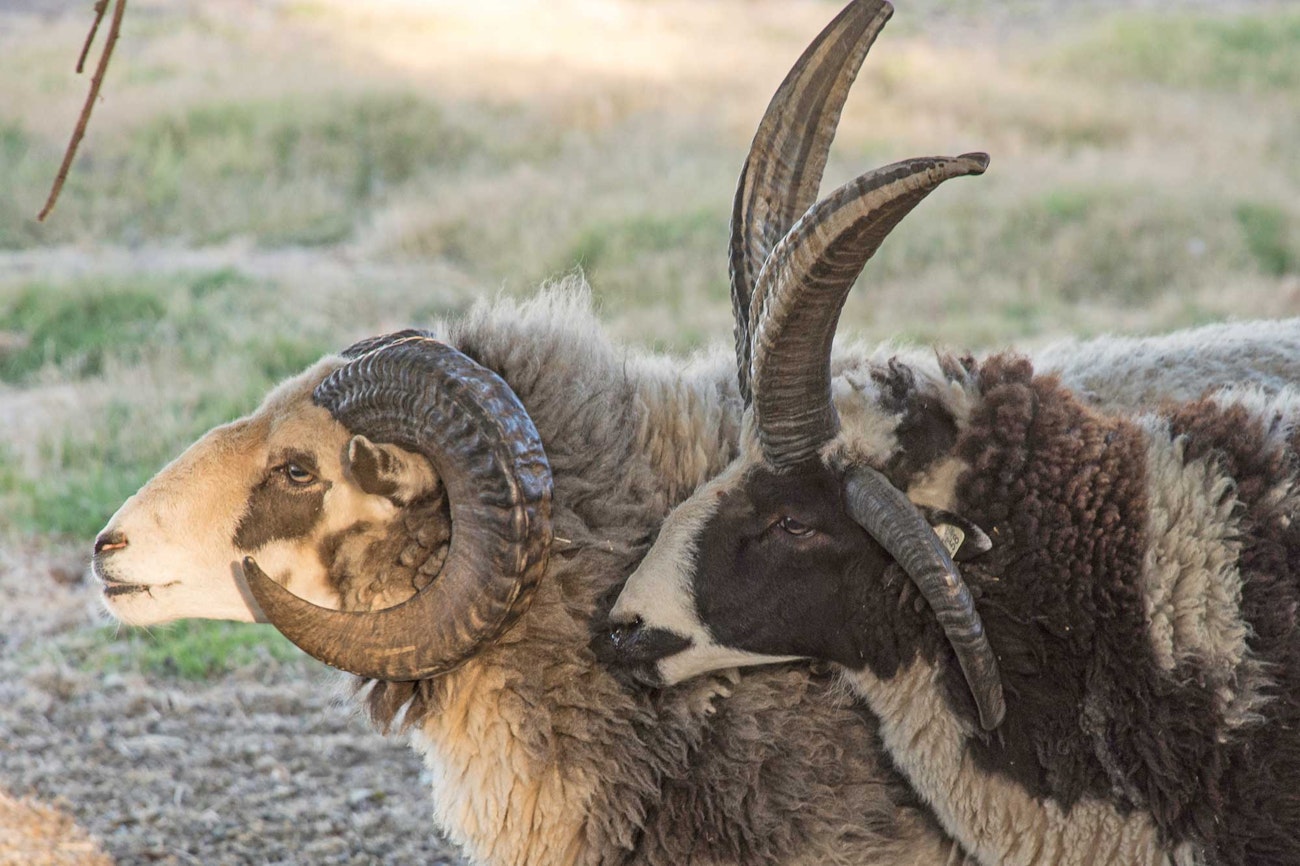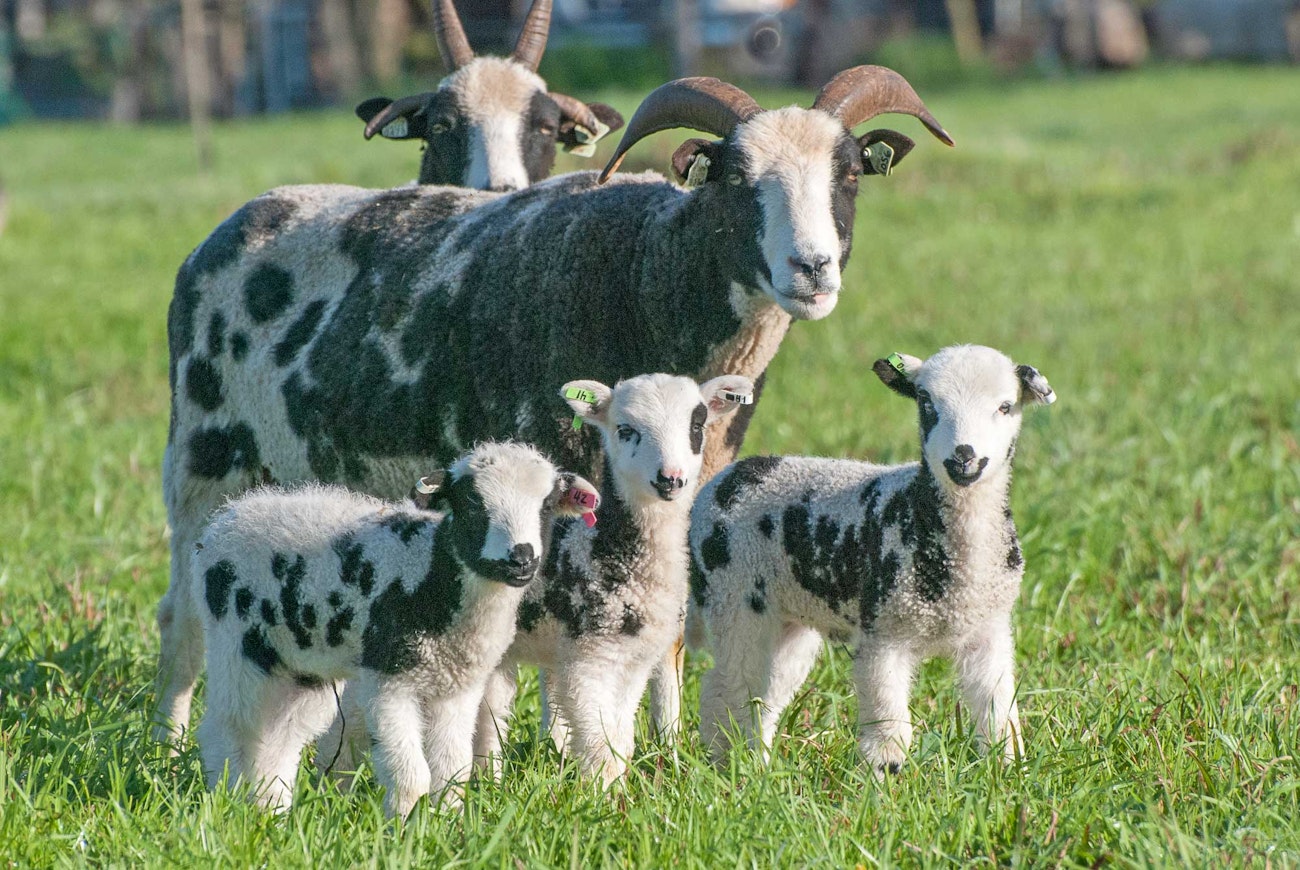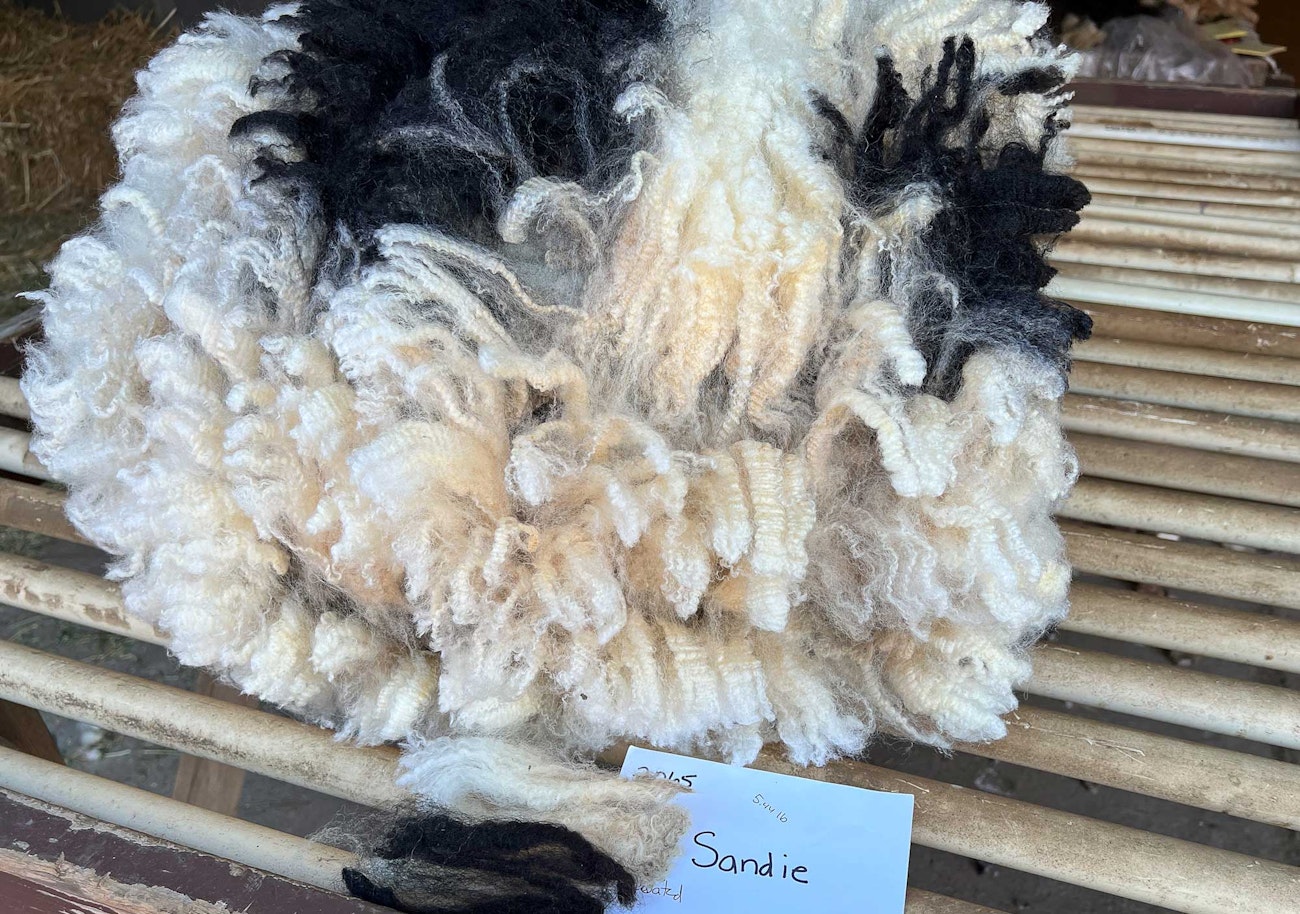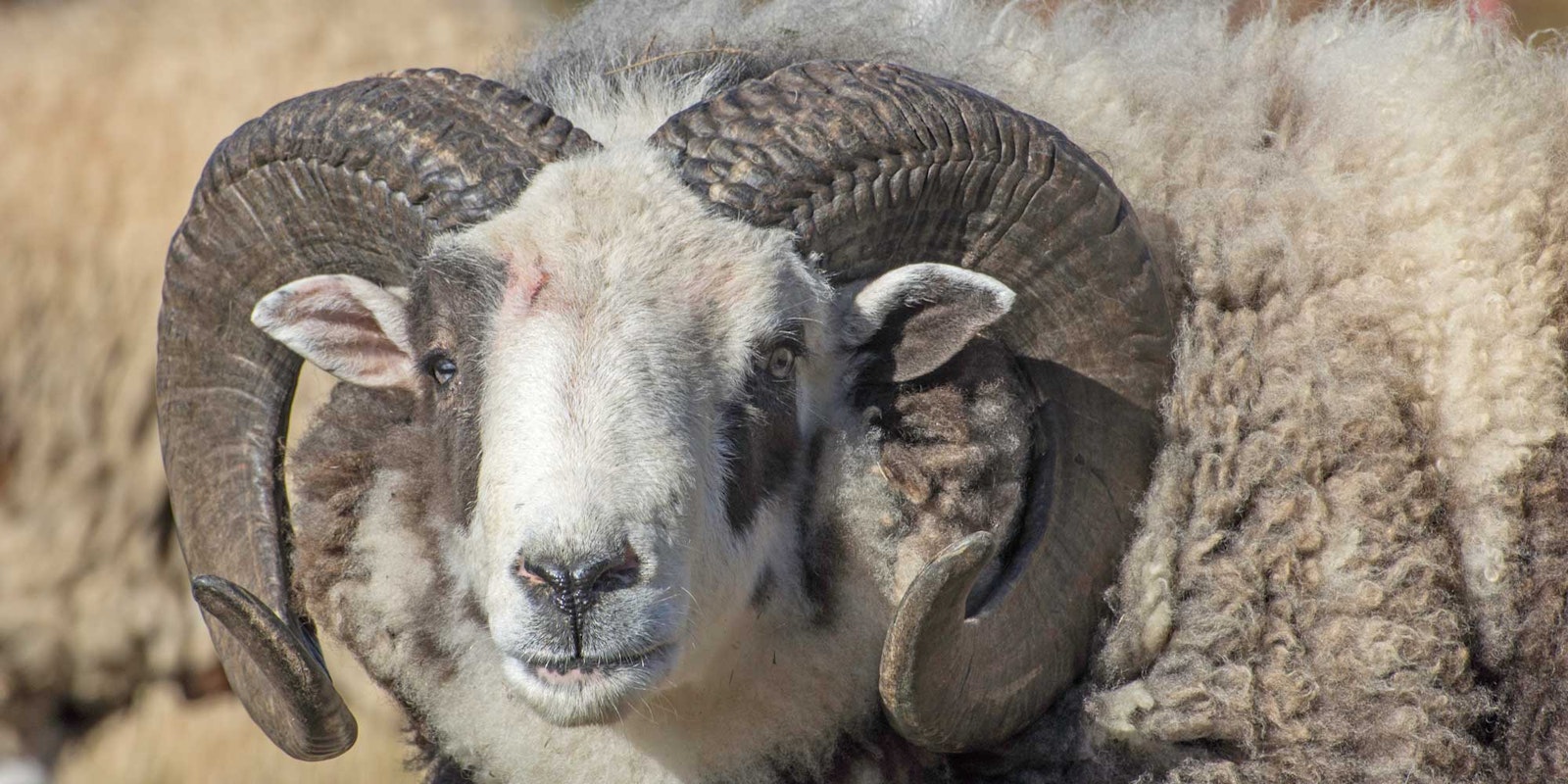Welcome to our series Meet the Sheep! We love hearing about sheep from the shepherds who raise them. These important perspectives can help us better understand the wool we spin and the people, animals, and landscapes that create it. Check out the series to meet more woolly friends. —Editors
I have been raising Jacob sheep since 1999, and my business has developed based on the wool my flock provides.
The Jacob is a rare breed of sheep, known for its black (or gray) and white face, spotted fleece, and multiple horns. Ewes and rams can have 2 or 4 horns (or sometimes 6), with the horns of rams sometimes reaching over 30 inches.
Most Jacob sheep are black and white. The black wool may appear brown from sun-bleached tips, but when you part the fleece, it will be black closer to the skin. The exception is the color pattern known as “lilac.” Lilac sheep have gray/brown facial markings, and the colored wool in their fleeces also follows that color pattern.
 Catalyst with Buster, a 4-horn black-and-white Jacob ram
Catalyst with Buster, a 4-horn black-and-white Jacob ram
Misty Origins
We know that Jacob sheep have been raised in England for at least 350 years, and may have originated about 3,000 years ago in what is now Syria. The breed was imported into North America for zoos in the 1950s and to early breeders in the 1960s and ’70s. In the United States today, Jacob is often considered more “true” to the earlier Jacob because British Jacobs have been selected for greater commercial productivity and size, and they may have been influenced by crossbreeding.
In 1988, enthusiasts in the United States created the Jacob Sheep Breeders Association (JSBA) to protect and conserve the breed. A comprehensive breed standard was written to encompass the range of phenotypic variability found in the earlier imported Jacob sheep, and to exclude sheep with evidence of crossbreeding and that addresses sheep health (or longevity) for traits such as split eyelids (a problem associated with multi-horned breeds) and deleterious horn growth.
I often hear from people who see spotted and/or horned sheep and assume they are Jacob, but that is not necessarily true. Each individual sheep in the United States that is a registered Jacob has been inspected by JSBA via photos to ensure that it complies with the breed standard.
 Meridian Jacobs ewe 1058, also known as Hot Lips, with her sweet triplets
Meridian Jacobs ewe 1058, also known as Hot Lips, with her sweet triplets
Jacob sheep are often smaller than many modern domestic breeds, with fine bone structure and less body fat. They are resistant to many of the health problems that afflict other commercially geared sheep, lamb easily, and have good mothering instinct.
What’s the fleece like?
Jacob sheep in America are considered “primitive” or “unimproved,” however, flocks vary widely. Their wool is a favorite of handspinners due to the handle and color pattern. The breed standard describes a broad range of fleece types based on microns (26–36 microns is desirable; 23.5–38 microns is acceptable). Individual flocks may have varying wool characteristics depending on the traits the breeder emphasizes. Jacobs often have coarser wool on the back leg or “britch,” and I usually sort that during skirting for a different product than the rest of the fleece.
 A black-and-white fleece from Sandie. Look at that crimp and color!
A black-and-white fleece from Sandie. Look at that crimp and color!
Jacob fleeces are typically lofty, light, and open, weighing 3 to 6 pounds. When you start with a fleece you have several options: sort colors and spin them separately, blend black and white to make shades of gray, or spin the colors randomly to get a variegated yarn. All can be used in the same project.
I often like to spin a fleece after separating the colors to reflect the markings of that sheep, but I also like to spin the colors randomly. To sort the fleece, I separate the black and white wool, and what is left over will become gray when carded and spun. After choosing fleeces to sell or keep, I sort the rest for mill processing into roving or yarn.
Robin Lynde raises Jacob sheep at Meridian Jacobs, her farm in Solano County, California. She shares her passion for wool and fiber arts by teaching classes in weaving and spinning at the farm and around the state. She sells her handwoven goods and farm produced fiber locally and online. Robin created the one-of-a-kind Farm Club for people who want in-depth experience raising sheep and a behind-the-scenes look at managing a small farm. Learn more at meridianjacobs.com.

